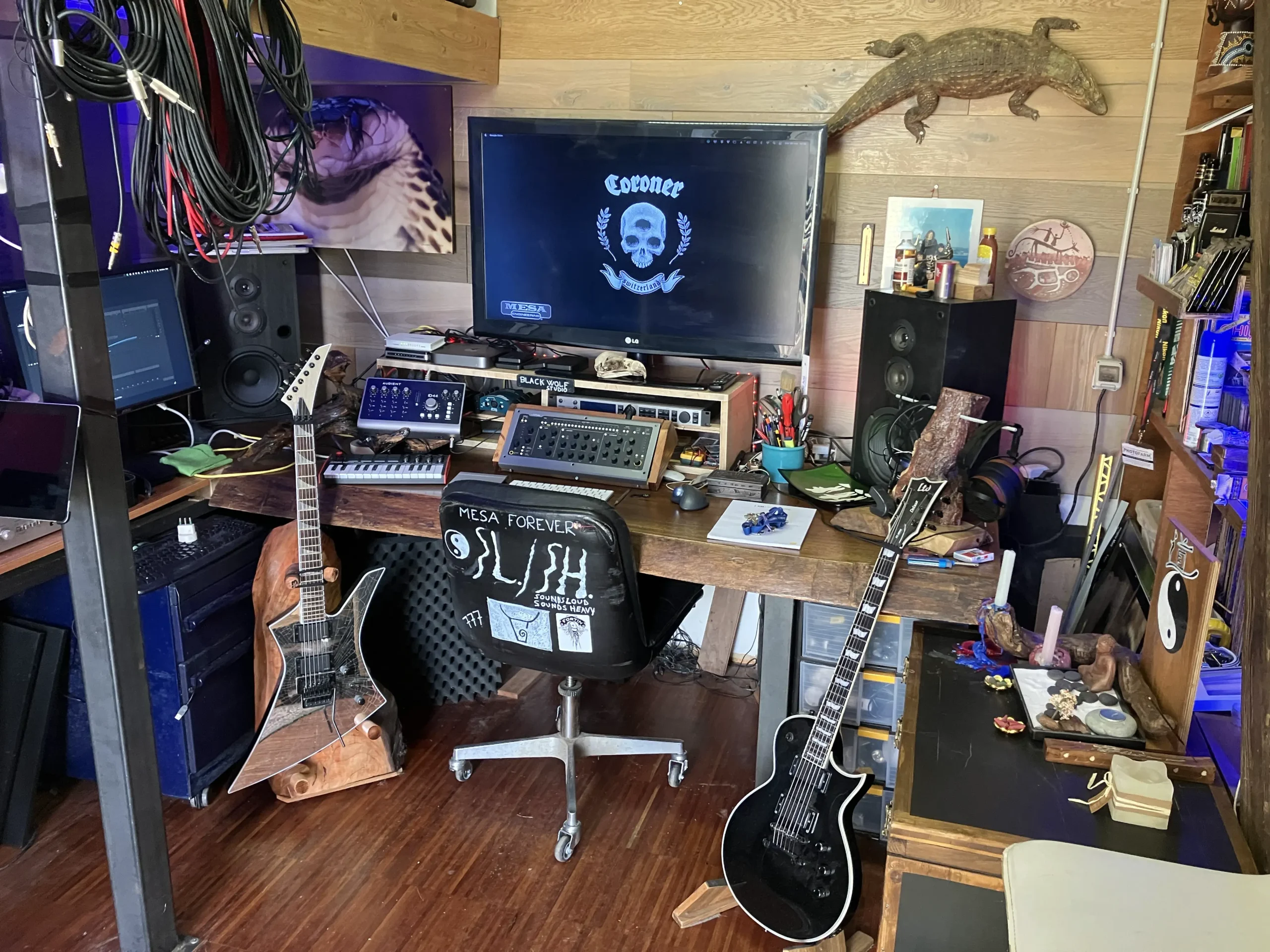Your basket is currently empty!
Black Enigma sound design is not the result of presets or templates — it’s the outcome of deliberate, passionate choices. Every band has its identity. Ours was built note by note, layer by layer — dirty but controlled, aggressive but detailed. The sound of The Black Enigma is raw, immersive, and designed with surgical precision. Welcome to our sonic machine.
Mix In The Box: The Core of Black Enigma Sound Design
Our entire mix was completed in the box, fully inside the DAW, with no use of analog outboard gear. However, this wasn’t about convenience — it was about control.
This approach allowed for full command over dynamics, automation, recall, and detail. The result is a clean digital chain that delivers warmth and personality, without compromise. This forms the foundation of Black Enigma sound design.
Vocals from the North: Analog Heart, Digital Precision
Lead vocals were recorded and edited by Eric Castiglia in his personal studio in Finland. Using a Shure SM7B — a modern classic for heavy vocals — through an analog preamp, he captured warmth, clarity, and grit.
Eric didn’t just perform; he built each part layer by layer. Multiple vocal takes were stacked to create depth and emotion, from raw screams to tight harmonies. Each track was carefully edited and balanced to hit with full emotional force, defining the human element in Black Enigma sound design.
Quad Tracking & Amp Rig: The Guitar Wall Behind Black Enigma Sound Design
Guitars are the backbone of our sonic identity. To achieve a massive stereo wall, we employed the quad tracking method:
-
Two rhythm tracks panned hard left
-
Two rhythm tracks panned hard right
This technique produces a tight, immersive, and punchy tone. We recorded with two legendary amps: a Mesa Boogie Dual Rectifier for smooth saturation and a Peavey 5150 Block Letter (original) for sharp mids and aggressive punch.
Both were routed through a British 4×12 cabinet loaded with Celestion Vintage 30s — a gold standard in heavy guitar tone.
Advanced Mic’ing: Fredman Technique with Extra Character
To capture the cabinet’s full tone, four microphones were placed with meticulous care:
-
Two Shure SM57s using the Fredman mic technique (one straight, one angled at 55°), blended through a Radial Engineering MIX2:1 passive mixer
-
One Sennheiser e906 for midrange definition
-
One Shure SM58 placed one meter back to capture room ambiance
The result is a tone that breathes and bites, adding a dynamic presence to Black Enigma sound design.
Synths & Atmospheres: The Ghosts Inside the Machine
Beneath the wall of guitars lies a soundscape of custom-programmed cinematic synths and ambient textures.
These elements are not just background pads, but subtle voices and sonic shadows, designed to whisper from the edges of the mix. They provide emotional tension, depth, and character — expanding the identity of our sound beyond traditional metal.
Electronic Drums: Human Soul in a Digital Framework
Although the drums were fully programmed, they were treated with the nuance of a real drummer. The kit consists of 13 channels with:
-
Layered velocities
-
Ghost notes
-
Round robin variation
-
Humanized timing
Mixed as if it were acoustic, this approach brings groove, power, and human emotion — reinforcing the rhythmic core of Black Enigma sound design.
Bass: The Balance Between Weight and Bite
The bass was recorded in two layers:
-
A clean DI track for precision and low-end clarity
-
A distorted channel for grit and aggression
Carefully blended, these tracks create a bass tone that cuts through the mix while grounding it with deep resonance — striking a balance essential to our sound design.
Every Detail Is a Decision
Everything on ΣΚΙΆ: Codex of the Vanishing was crafted with intention. Each tone, each texture, each whisper of distortion was built from scratch — not drawn from presets.
Our sound was shaped across studios, countries, and minds. In Eric’s case, across the sea in Finland. With focus. With fire.
Because the real Enigma isn’t just in the lyrics.
It’s in the pressure you feel, the vibration of the tone, and the silence between the waves.

